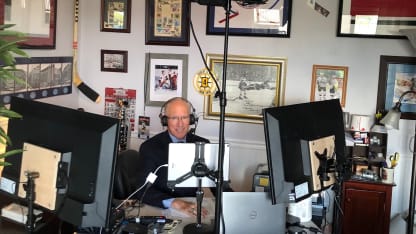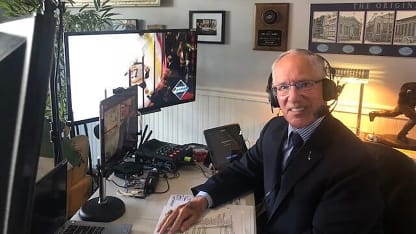As the NHL returns after pausing its season on March 12 because of concerns about the coronavirus, NBC Sports and Canada's Rogers Sportsnet will use multiple platforms to provide blanket coverage of the Qualifiers in Toronto, where 12 Eastern Conference teams will play at Scotiabank Arena, and Edmonton, where Rogers Place will be home to 12 Western Conference teams, and the playoffs to follow. In French, TVA Sports will carry all Montreal Canadiens games as well as all four rounds of the playoffs. Additional programming will be offered throughout in the U.S. on NHL Network, NHL Center Ice and NHL.TV.
NBC's plan is to have its on-air crew in Edmonton for the conference finals and the Stanley Cup Final, but the network is assembling this huge jigsaw puzzle one piece at a time.
"The sun has finally burst through and we've got finalized plans to return to play," Emrick said Monday, joined on a call by Olczyk, fellow analysts Brian Boucher and Patrick Sharp and by Sam Flood, executive producer of hockey for NBC Sports. "Seasons in jeopardy because of injury have now changed. Full recovery has enabled some athletes to return to their teams and contribute toward going to the Stanley Cup. … And try to pick a winner in all of this -- I challenge you to do that."
Emrick got his start calling hockey games on radio in 1974-75 for the defunct Port Huron Flags of the International League. He joked that his broadcast setup today doesn't much resemble what he had in the nearly empty 900-seat Metro Ice Arena in Lansing, Michigan, describing his current studio of multiple monitors, an iPad, microphones and an audio mixer.





